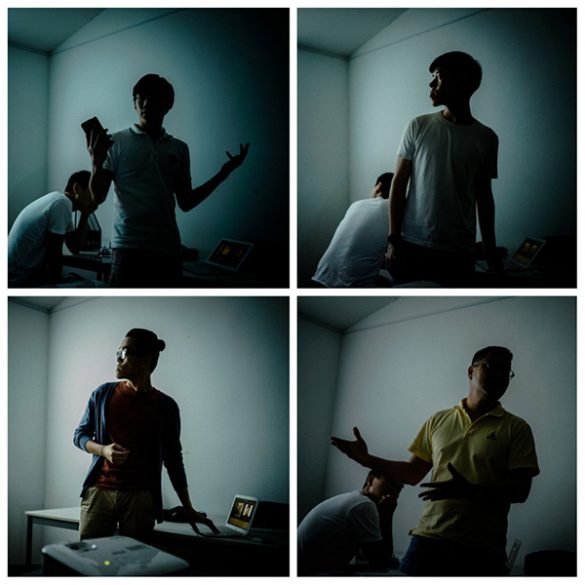Pitching Photo Stories: Notes from the Twentyfifteen.sg +50 Pitch Session
I was invited to be on the jury panel for the second Twentyfifteen.sg +50 Pitch Session over the weekend. Here are some Q&A notes as requested by the organisers.
Could you perhaps share with us some takeaway points from the previous pitching session?
I love listening to people share their stories and their point of view. Opinion and expression is always delightful to hear and see especially if it is well-thought out and explained, regardless of whether I agree with them or not.
It was also a treat to see ‘non-photographers’ pitch their wits and pictures. I enjoyed the first session where I was spectating and the 2nd session where I juried.
What worked, and what didn’t for you?
There are different types of stories, people, and photographs to be made out there. I look at each one differently depending on what the project is and who is presenting, their background and experience. Here is a summary of my personal notes.
Editing and selection of images is very important. When you put a series of photographs together, they need to have a conversation with each other, that audiences eavesdrop on. That is if your intention is to impart a narrative of sorts, and not just a portfolio showcase of your best single shots, but even then you need a thread to tie them together.
There are projects that are by demand very methodical, so the approach needs to have methods in place. What you shoot, how you shoot and when you shoot needs to be firm and formal, calculated and deliberate. Jason’s Blue Canvas project is like a study, so you would need to set perimeters – the less variables you have, the sharper the study. A more seasoned photographer did an identical project in Hong Kong recently. But that shouldn’t discourage Jason, he just needs to contextualise and localise, add his own sambal belacan.
Quek Hui Min was very witty and I enjoyed her presentation. Her pictures weren’t strong as photographs, but they were honest. Everyone has a different relationship with photography. Some, like Hui Min, use photography as therapy. If you are making pictures for yourself then by all means shoot what you feel and want. The moment you want an audience, you need to look at your pictures and see whether they are personal jargons or whether others might sense what you saw or felt.
Some projects were on subjects that are widely available and widely photographed. Those projects are immediately at a disadvantage as people have seen them over and over again. The questions would be why pick those subjects? Is it because its available and easy? Why invest your curiosity and time on this subject? And what can I add that others haven’t already added?
There is a tendency when we get creative to try and say too many things, express too many ideas. Sometimes it is better to simplify. If you look at something long enough, it’ll sprout wings and fly. So don’t discount looking at only one idea or one particular aspect, and examining it for an extended period of time. This feedback can be for the void decks project.
We also have a tendency to be very literal in our expression. When we show love or loss, we pick very obvious and predictable symbols and icons. Philip’s introduction to Sayang, Sayang was the most touching and honest for me. His words moved me more so than his pictures. The thing now is to match the language in the photos with what he has to say or feel, in Philip’s case.
Quite a lot of the pitches had Black & White photography. Choosing to shoot in B/W is a very deliberate choice. Do you see the world with a monochromatic eye or are you trying to add a faux sense of nostalgia? Shoot the same scene in straight colour, is the nostalgia still there? Sometimes B/W images that aren’t motivated appropriately makes a young photographer look like a tired, old soul.
Last but not least, I’d like to highlight the idea of ‘story’. Story is not only about a linear and logical narrative, with a start, middle and end, with a clear subject and conflict. A picture story can also be an abstract, visceral meditation, on any subject, mood, thought, question or emotion really. For Twentyfifteen.sg, the only suggestion is that ‘Singapore’ is the thread that ties it all together.
When is a good time you think people should step forward to pitch their work?
In most cases, people verbalised much better than they visualised. So a good time to pitch is when both matches. Not everyone on the jury are photographers so you need to be at a point where you can convince everyone. Like pitches of any kind, you need ‘proof of concept’. Less is more, and people usually remember one or two strong shots that encapsulates what it’s all about.
As a juror, what type of work speaks to you?
Sincere effort and honest work where I can feel the hand that made them. A surprising approach helps.
How about some advice for people pitching in future?
Nothing lost, nothing gained.
Thanks for having me. Look forward to the next session.
Read more notes on Pitching by Sebastian Song here: http://twentyfifteen.sg/plus50
Share



